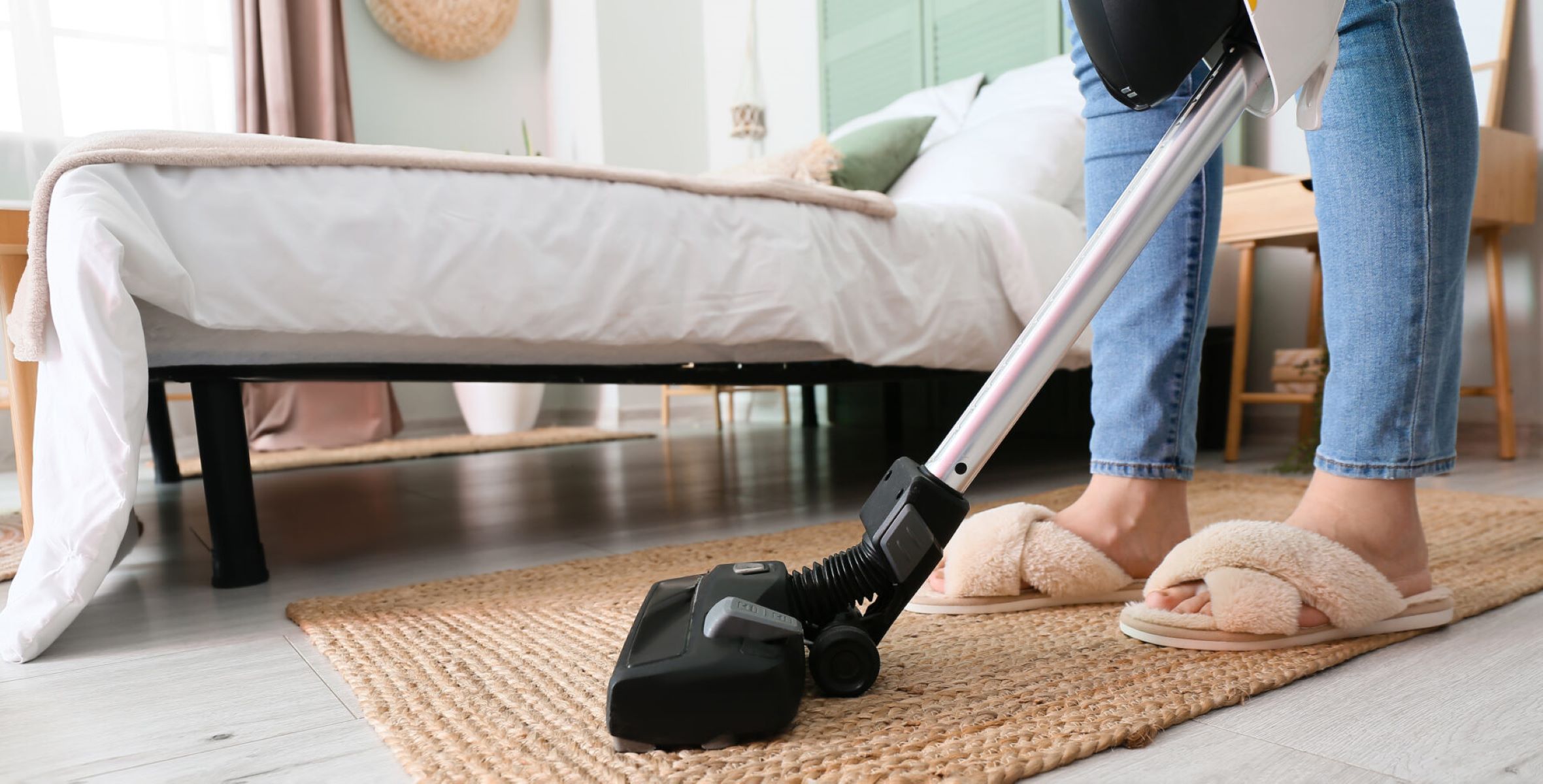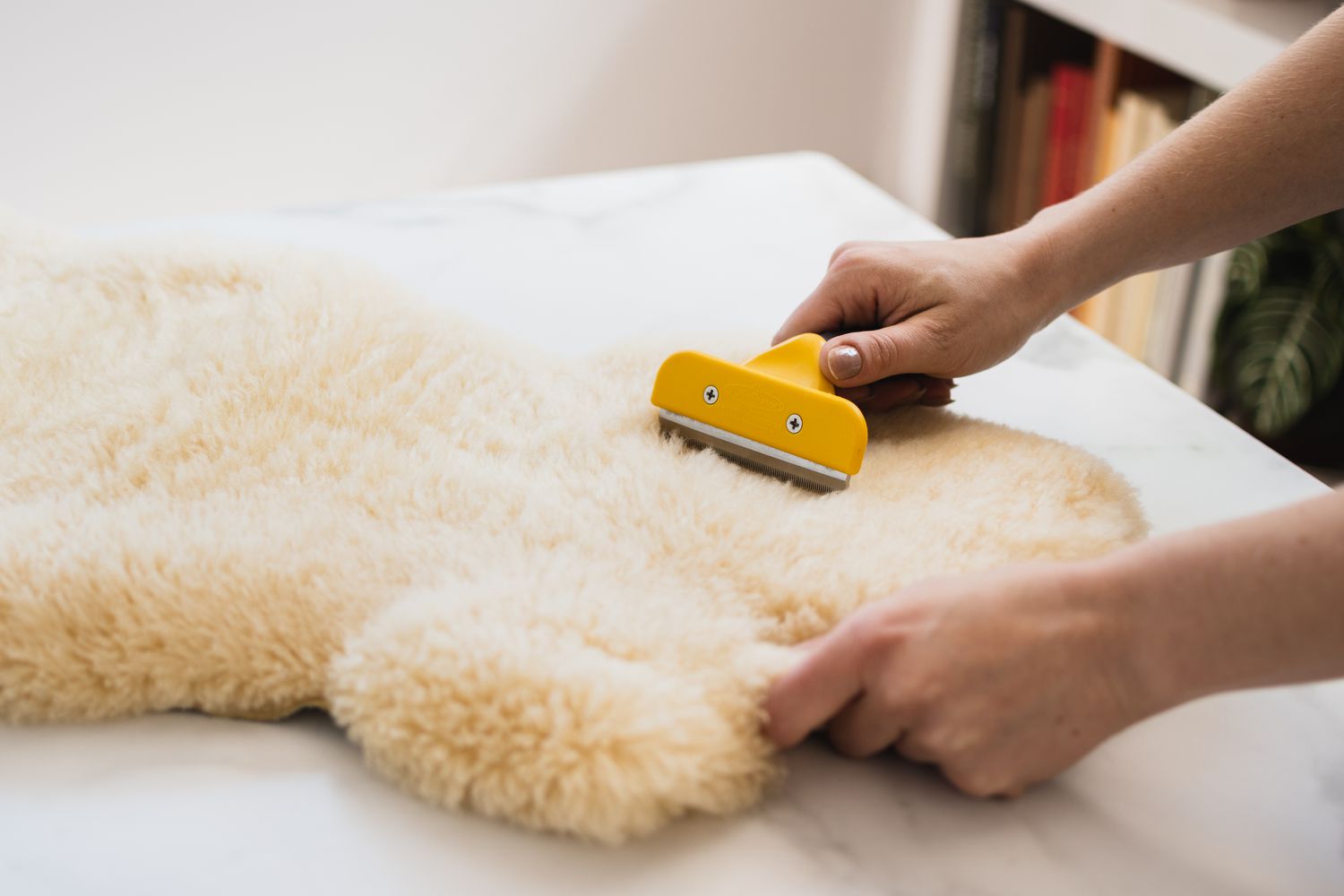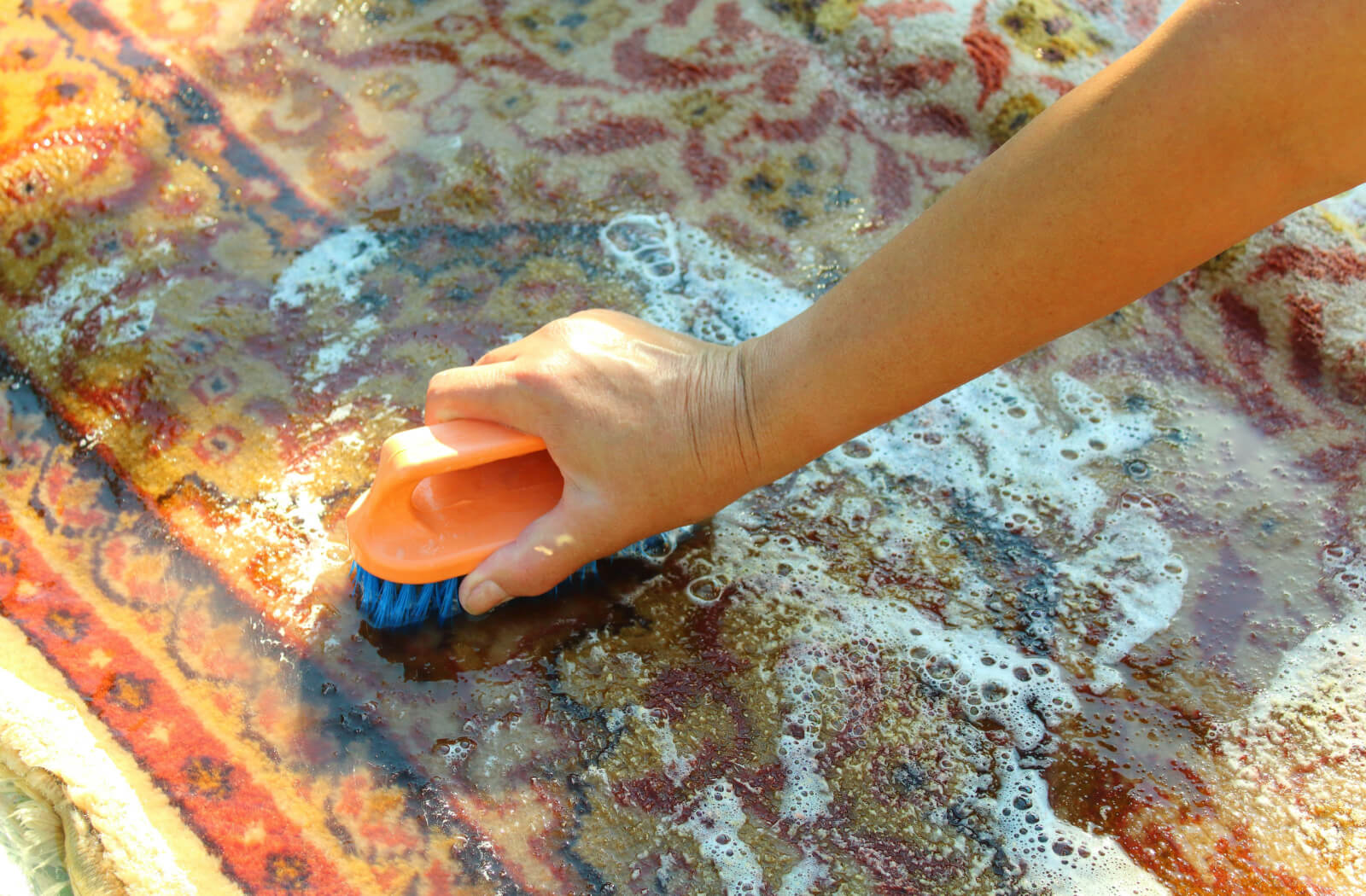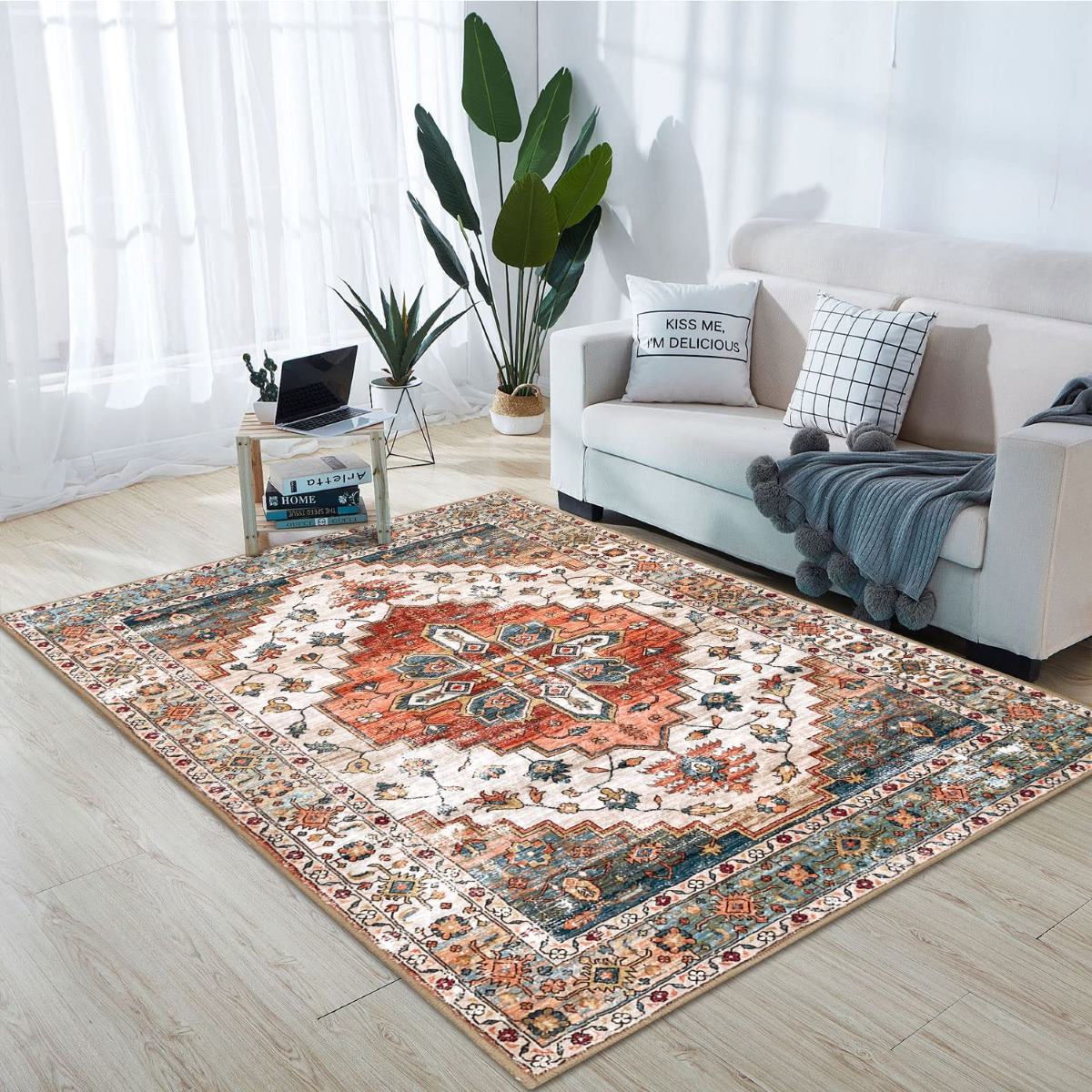

Articles
How To Clean Sisal Rugs
Modified: March 21, 2024
Discover the best articles on how to effectively clean sisal rugs and prolong their lifespan. Expert tips and techniques for removing stains and maintaining a beautiful, natural look.
(Many of the links in this article redirect to a specific reviewed product. Your purchase of these products through affiliate links helps to generate commission for Storables.com, at no extra cost. Learn more)
Introduction
Sisal rugs are a popular choice for many homeowners due to their natural beauty and durability. Made from the fibers of the agave plant, sisal rugs are not only stylish but also sustainable. However, like any other rug, sisal rugs require regular cleaning to maintain their appearance and extend their lifespan.
When it comes to cleaning sisal rugs, it’s important to follow the right techniques and use gentle cleaning agents to avoid damaging the natural fibers. In this article, we will guide you through the step-by-step process of cleaning sisal rugs, from pre-cleaning preparations to deep cleaning and maintenance tips.
Key Takeaways:
- Regular cleaning of sisal rugs is crucial to maintain appearance, prevent damage, eliminate allergens, and improve indoor air quality. Proper maintenance preserves sustainability and extends the rug’s lifespan.
- Preparing the rug, vacuuming regularly, spot cleaning stains, and deep cleaning when necessary are essential for maintaining the natural beauty and longevity of sisal rugs. Following proper drying and maintenance tips ensures the rug remains a durable and stunning focal point in your home.
Read more: What Are Sisal Rugs
Why Clean Sisal Rugs?
Before we dive into the cleaning process, let’s first understand why it’s essential to keep your sisal rugs clean. Over time, dirt, dust, and debris can accumulate within the fibers, deteriorating the rug’s appearance and potentially causing damage. Regular cleaning not only helps maintain the rug’s visual appeal but also helps to prevent the buildup of allergens and bacteria.
In addition, stains and spills can occur on sisal rugs, especially in high-traffic areas. Promptly addressing these stains can prevent them from setting into the fibers and becoming difficult to remove. By regularly cleaning and maintaining your sisal rugs, you can ensure they stay fresh, clean, and beautiful for years to come.
Pre-Cleaning Preparation
Before you begin the cleaning process, it’s crucial to prepare the rug adequately to ensure effective and safe cleaning. Here are a few pre-cleaning steps to follow:
- Remove any furniture or objects from the rug’s surface. This will make it easier to clean every inch of the rug.
- Check the rug for any loose threads or damaged areas. Trim any loose threads with scissors and make note of any damaged spots that may require extra care during cleaning.
- Test a small, inconspicuous area of the rug with a mild cleaning solution to ensure it does not cause discoloration or damage. Wait for the test spot to fully dry before proceeding.
Once you have completed these pre-cleaning steps, you are ready to start cleaning your sisal rug.
Key Takeaways:
- Regular cleaning of sisal rugs is crucial to maintain appearance, prevent damage, eliminate allergens, and improve indoor air quality. Proper maintenance preserves sustainability and extends the rug’s lifespan.
- Preparing the rug, vacuuming regularly, spot cleaning stains, and deep cleaning when necessary are essential for maintaining the natural beauty and longevity of sisal rugs. Following proper drying and maintenance tips ensures the rug remains a durable and stunning focal point in your home.
Read more: What Are Sisal Rugs
Why Clean Sisal Rugs?
Sisal rugs are valued for their natural beauty, durability, and eco-friendly qualities, making them a popular choice for homeowners. However, like any rug, sisal rugs require regular cleaning to maintain their appearance and extend their lifespan.
Here are a few reasons why it’s important to clean sisal rugs:
Maintain Appearance
Over time, dirt, dust, and debris can accumulate within the fibers of a sisal rug, causing it to appear dull and worn out. Regular cleaning helps remove these particles and restores the rug’s natural shine, ensuring it continues to enhance the aesthetic appeal of your space.
Read more: How To Clean A Sisal Carpet
Prevent Damage
Aside from compromising its appearance, dirt and debris can also cause damage to the fibers of a sisal rug. These particles can become abrasive and lead to fraying or weakening of the fibers. By regularly cleaning your sisal rug, you remove these harmful substances and prevent potential damage, prolonging the rug’s lifespan.
Eliminate Allergens
Sisal rugs, like any other rug, can harbor allergens such as dust mites, pet dander, and pollen. These allergens can trigger allergic reactions and respiratory issues, especially for individuals with allergies or asthma. Regular cleaning helps eliminate these allergens, creating a healthier indoor environment for you and your family.
Prevent Stains
Accidents happen, and spills or stains on sisal rugs are not uncommon, especially in high-traffic areas. Promptly addressing these stains is crucial, as some substances can quickly penetrate the fibers and become difficult to remove. Regular cleaning, including spot cleaning, can help prevent stains from setting in and keep your sisal rug looking fresh and clean.
Improve Indoor Air Quality
Regular vacuuming and cleaning of sisal rugs help improve indoor air quality by reducing the amount of dust and allergens circulating in your home. This is especially important if you or your family members suffer from allergies or respiratory conditions.
Preserve Sustainability
Sisal rugs are made from natural fibers derived from the agave plant, making them a sustainable and eco-friendly choice. By properly cleaning and maintaining your sisal rug, you can extend its lifespan, reducing the need for replacement and minimizing waste.
Overall, regular cleaning of sisal rugs is essential to preserve their appearance, prevent damage, eliminate allergens, and improve indoor air quality. By investing time in proper maintenance, you can enjoy the natural beauty and durability of your sisal rug for many years to come.
Pre-Cleaning Preparation
Before you begin the process of cleaning your sisal rug, it’s crucial to properly prepare the rug to ensure effective and safe cleaning. Follow these pre-cleaning steps:
Remove Furniture and Objects
Start by removing any furniture or objects from the surface of the rug. This will make it easier to clean every inch of the rug and prevent any obstruction during the cleaning process.
Inspect for Loose Threads or Damage
Inspect the sisal rug carefully for any loose threads or damaged areas. Sisal rugs have a textured surface, and loose threads can easily get caught in vacuum cleaners or cause further damage to the rug. Trim any loose threads with a pair of scissors, being careful not to pull on them, which could unravel the weave.
Additionally, note any damaged spots on the rug that may require extra care during the cleaning process. These areas might include stains, faded sections, or weakened fibers. Identifying these areas beforehand will help you take the necessary precautions during cleaning.
Read more: How To Clean Large Rugs
Perform a Spot Test
Before applying any cleaning solution to the entire rug, it’s essential to perform a spot test on a small, inconspicuous area. This is especially important if you are using a new cleaning product or method. Apply a small amount of the cleaning solution to the test spot and blot it with a clean cloth. Wait for the spot to dry completely and check for any discoloration or adverse reactions. If there are no visible signs of damage or discoloration, it’s safe to proceed with cleaning the entire rug.
Protect the Surrounding Area
Lastly, to prevent any damage to the floor or surrounding area, place a plastic sheet or a drop cloth beneath the rug during the cleaning process. This will catch any excess moisture or cleaning solution that may drip through the fibers.
By completing these pre-cleaning steps, you’ll ensure that your sisal rug is ready for an effective and safe cleaning process. Taking the time to prepare the rug properly will help avoid any potential issues and allow you to achieve the best cleaning results.
Vacuuming the Rug
Vacuuming is an essential step in maintaining the cleanliness and appearance of your sisal rug. Regular vacuuming removes dirt, dust, and debris that can accumulate within the fibers, preventing them from becoming embedded and causing damage to the rug. Follow these steps to effectively vacuum your sisal rug:
Choose the Right Vacuum
When it comes to sisal rugs, it is recommended to use a vacuum cleaner with a beater bar or a brush attachment. The brush or beater bar helps to agitate the fibers, loosening the dirt and allowing the vacuum to effectively suction it up. However, ensure that the brush or beater bar isn’t too harsh, as it may cause damage to the rug. If your vacuum cleaner has adjustable settings, set it to the appropriate height for low-pile or bare floors.
Read more: How To Clean Rag Rugs
Remove Loose Particles
Before vacuuming, it’s a good idea to lightly shake or beat the rug to dislodge any loose particles. This will help to prevent them from clogging the vacuum cleaner and ensure a more thorough cleaning. Take the rug outdoors, if possible, and gently shake it or use a broom to lightly beat the back of the rug. Be careful not to be too forceful to avoid damaging the rug.
Vacuum in Different Directions
When vacuuming the sisal rug, it’s best to vacuum in both the lengthwise and crosswise directions. This will help to loosen and remove debris from all angles, ensuring a more comprehensive clean. Take your time and make slow passes over the rug to allow the vacuum cleaner to effectively suction up dirt and dust.
Pay Attention to Edges and Corners
Don’t forget to pay special attention to the edges and corners of the sisal rug, as these are often high-traffic areas where dirt tends to accumulate. Use the edge or crevice tool attachment on your vacuum cleaner to effectively clean along the edges and get into corners.
Repeat as Needed
For regular maintenance, vacuuming your sisal rug once or twice a week should be sufficient. However, if you have pets or experience heavy foot traffic, you may need to vacuum more frequently to keep the rug clean and free from dirt and allergens.
Vacuuming your sisal rug regularly is essential for its upkeep, ensuring that dirt and debris do not have a chance to build up and cause damage. By following these tips, you’ll effectively remove loose particles and maintain a clean and beautiful sisal rug for years to come.
Read more: How To Clean Silk Rugs
Spot Cleaning Stains
Accidents happen, and unfortunately, stains can occur on your sisal rug. Promptly addressing these stains is crucial to prevent them from setting and becoming more difficult to remove. Follow these steps to effectively spot clean stains on your sisal rug:
Act Quickly
As soon as a spill or stain occurs on your sisal rug, it’s important to act quickly. The longer the stain sits, the harder it will be to remove. Grab a clean, absorbent cloth or paper towels and gently blot the stained area to remove as much of the liquid or substance as possible. Avoid rubbing the stain, as this can push it deeper into the fibers.
Neutralize the Stain
If the stain is caused by a liquid, you can use a mixture of warm water and a few drops of mild dish soap to neutralize it. Test the solution on a small, inconspicuous area of the rug first to ensure that it does not cause any discoloration. Once the solution is tested, dampen a clean cloth with the soapy water and blot the stained area gently. Again, avoid rubbing the stain.
Blot with Water
If the stain does not respond to the soapy water solution, you can try blotting it with plain warm water. Dampen a clean cloth with water and blot the stain gently. This can help to further dilute and lift the stain from the fibers of the sisal rug.
Read more: How To Clean Viscose Rugs
Avoid Harsh Chemicals and Excessive Moisture
It’s important to avoid using harsh chemicals, bleach, or strong cleaning agents on your sisal rug as they can cause discoloration or damage to the natural fibers. Additionally, avoid using excessive amounts of water or other liquid cleaners, as sisal rugs are not designed to withstand heavy saturation.
Patience and Repeat if Necessary
Some stains may require multiple treatment attempts. Be patient and continue to blot the stain gently, making sure not to oversaturate the rug. Repeat the process as needed until the stain is lifted or lightened. Be aware that some stains, such as oil-based stains, may be more challenging to remove and may require professional cleaning.
Allow the Rug to Dry
Once you have successfully spot cleaned the stain, allow the rug to air dry completely. Avoid placing heavy furniture or walking on the area until it is fully dry to prevent any re-soiling or damage.
Spot cleaning stains on your sisal rug as soon as they occur is essential to maintain its pristine appearance. By following these steps and being cautious with the cleaning solutions used, you can effectively remove stains and keep your sisal rug looking fresh and clean for years to come.
Removing Odors
Over time, sisal rugs can develop odors due to trapped moisture, spills, or everyday use. Fortunately, there are several methods to effectively remove odors and keep your sisal rug smelling fresh. Follow these steps to eliminate odors from your sisal rug:
Read more: How To Clean Fluffy Rugs
Odor Absorbing Powders
One effective method to remove odors from a sisal rug is to use odor absorbing powders. These powders, such as baking soda or specialized carpet deodorizers, work by neutralizing and absorbing odors. Sprinkle the powder generously over the entire rug, ensuring that it reaches deep into the fibers. Leave it on the rug for several hours or overnight to allow the powder to absorb the odors. Then, vacuum the rug thoroughly to remove the powder and any trapped odors.
Vinegar Solution
Vinegar is a natural deodorizer that can help eliminate odors from a sisal rug. Create a solution of equal parts white vinegar and water in a spray bottle. Lightly mist the solution over the affected areas of the rug, making sure not to saturate it. Allow the vinegar solution to sit on the rug for a few minutes to help neutralize the odors. Afterward, blot the area with a clean cloth to absorb any excess moisture and odor. Leave the rug to air dry completely.
Steam Cleaning
Using a steam cleaner is another effective method to remove odors from a sisal rug. The high heat of the steam can penetrate deep into the fibers, killing bacteria and odor-causing organisms. Before using a steam cleaner, it is crucial to check the manufacturer’s instructions and ensure that it is safe to use on a sisal rug. Steam clean the entire rug according to the machine’s guidelines, paying extra attention to areas with odors. Allow the rug to dry completely after steam cleaning, as any remaining moisture can contribute to unpleasant odors.
Natural Fresheners
There are several natural fresheners that can help eliminate odors from your sisal rug. Sprinkling dried herbs, such as lavender or rosemary, over the rug can impart a pleasant scent while absorbing odors. Alternatively, placing small bowls of activated charcoal or coffee grounds near the rug can also help absorb unwanted smells. Remember to replace or refresh these natural fresheners regularly to maintain their effectiveness.
Read more: How To Clean Cowhide Rugs
Proper Ventilation
Allowing your sisal rug to receive proper ventilation can also help eliminate odors. If possible, take the rug outdoors on a dry and sunny day and hang it over a clothesline or railing. The fresh air and sunlight will help to naturally deodorize the rug. Alternatively, you can open windows and use fans to improve air circulation in the room where the rug is located.
By following these methods, you can effectively remove odors from your sisal rug and enjoy a fresh and pleasant smelling living space. Remember to always test any cleaning solutions or fresheners on a small, inconspicuous area of the rug first to ensure they do not cause any discoloration or damage.
Deep Cleaning Sisal Rugs
Deep cleaning a sisal rug is an essential step to remove embedded dirt, stains, and odors that regular vacuuming and spot cleaning may not be able to tackle. Although sisal rugs are more delicate than synthetic rugs, they can still be deep cleaned effectively with the right techniques. Follow these steps to deep clean your sisal rug:
Check Manufacturer’s Guidelines
Before deep cleaning your sisal rug, it’s important to check the manufacturer’s guidelines, if available. Some sisal rugs may have specific cleaning instructions or restrictions, such as not being suitable for water-based cleaning methods. Following the manufacturer’s recommendations will help prevent any potential damage to the rug.
Dry Cleaning Powder
One commonly used method for deep cleaning sisal rugs is to use a dry cleaning powder. These powders contain cleaning agents that help remove dirt and debris from the rug’s fibers. Sprinkle the dry cleaning powder liberally over the entire rug, ensuring even coverage. Use a soft-bristle brush or a broom to work the powder into the rug, allowing it to reach deep into the fibers. Leave the powder on the rug for the recommended time specified on the product’s instructions. Finally, thoroughly vacuum the rug to remove the powder and extract the loosened dirt.
Read more: How To Clean A Carpet Rug
Professional Cleaning
If your sisal rug requires a more thorough deep cleaning or if you are unsure about the appropriate cleaning method, it’s best to consult professional rug cleaners. Professional cleaners have the expertise and specialized equipment to deep clean sisal rugs safely. They will assess the condition of the rug, identify the most suitable cleaning method, and ensure that the rug is returned to you clean and in the best possible condition.
Avoid Excessive Moisture
When cleaning a sisal rug, it’s crucial to avoid excessive moisture. Sisal fibers are not designed to withstand heavy saturation, as it can lead to shrinking, warping, or mildew growth. If you choose to use water-based cleaning solutions, ensure they are applied sparingly and blotted immediately to minimize moisture absorption. Additionally, thoroughly dry the rug after deep cleaning to prevent any lingering moisture.
Prevent Overcleaning
Deep cleaning should be performed only when necessary, as excessive cleaning can lead to wear and tear on the rug’s fibers. Avoid the temptation to deep clean your sisal rug too often, as regular vacuuming and spot cleaning should be sufficient for routine maintenance. Reserve deep cleaning for times when the rug is visibly dirty, heavily soiled, or has persistent odors.
Deep cleaning your sisal rug periodically is vital to maintain its cleanliness and prolong its lifespan. By following these steps and being mindful of the rug’s delicate nature, you can effectively remove embedded dirt and keep your sisal rug looking fresh and beautiful for years to come.
Drying and Maintenance Tips
Proper drying and maintenance of your sisal rug are crucial to ensure its longevity and keep it looking its best. Here are some tips to follow:
Read more: How To Clean Car Rugs
Allow Sufficient Drying Time
After any wet cleaning process, it’s essential to allow your sisal rug to dry thoroughly. Excess moisture can potentially lead to mold or mildew growth. Hang the rug in a well-ventilated area or lay it flat on a clean, dry surface. Ensure that both sides of the rug are exposed to air circulation. Avoid direct sunlight or high heat sources, as they can cause color fading or shrinkage. Patience is key, as drying times may vary depending on humidity levels and the size of the rug.
Protect from Water Damage
Prevent water damage by taking precautions. Avoid spills and excessive moisture on your sisal rug whenever possible. Promptly attend to any liquid spills by blotting them gently with a clean cloth or paper towel. Avoid rubbing the spill, as it can spread the liquid or push it deeper into the fibers. Use a dry, absorbent cloth to soak up as much moisture as possible. If needed, use a fan or spot dry with a hairdryer on the lowest heat setting to expedite drying.
Avoid Direct Sunlight
Direct sunlight exposure can cause sisal rugs to fade over time. Place your rug away from direct sunlight to prevent discoloration and maintain its original vibrancy. If your sisal rug is in an area with significant sun exposure, consider using window coverings or shades to protect it from prolonged sunlight exposure.
Regular Vacuuming
Regular vacuuming is essential for maintaining your sisal rug. It helps remove loose dirt, dust particles, and allergens. Use a vacuum cleaner with a brush attachment or a beater bar to agitate the fibers gently. Vacuum in both the lengthwise and crosswise directions to ensure thorough cleaning. Be extra cautious when vacuuming any decorative borders or delicate trim, as they may be more prone to damage.
Read more: How To Clean Floor Rug
Rotate and Rearrange
To prevent uneven wear and tear, regularly rotate your sisal rug. Rotating the rug every few months will distribute foot traffic and sunlight exposure more evenly, helping the rug age uniformly. Additionally, consider rearranging your furniture periodically to shift the weight and pressure on the rug, reducing the chances of permanent indentations or impressions.
Address Stains Promptly
Deal with stains promptly to minimize their impact. Use appropriate spot cleaning techniques or consult professional cleaners for stubborn stains. The sooner you address a stain, the easier it will be to remove.
Protect from Pets and Sharp Objects
Sisal rugs are susceptible to damage caused by sharp objects or pet claws. Trim your pet’s nails regularly, and use protective mats or rugs in high-traffic areas where people or pets might frequently traverse. This precaution will help preserve the integrity of your sisal rug and reduce the risk of snags or scratches.
By following these drying and maintenance tips, you can prolong the life and beauty of your sisal rug. With proper care, your rug will remain an elegant and durable addition to your home for many years to come.
Conclusion
Cleaning and maintaining your sisal rug is essential to preserve its natural beauty, extend its lifespan, and create a clean and healthy living environment. By following the proper cleaning techniques and taking preventive measures, you can keep your sisal rug looking fresh and vibrant for years to come.
Regular vacuuming, spot cleaning, and deep cleaning as needed are key to removing dirt, stains, and odors from your sisal rug. Vacuuming on a weekly basis helps prevent dirt and debris from settling into the fibers and causing damage. Promptly addressing stains and spills prevents them from setting and becoming more difficult to remove. Deep cleaning, whether with dry cleaning powders or through professional services, restores the rug’s cleanliness and freshness.
In addition to cleaning, it’s important to take preventive measures to protect your sisal rug. This includes properly preparing the rug for cleaning by removing furniture and checking for loose threads or damage. It also involves being mindful of excessive moisture, direct sunlight exposure, and potential hazards from pets or sharp objects.
Lastly, allowing your sisal rug to dry thoroughly and following regular maintenance tasks such as rotating and rearranging furniture will help maintain its appearance and prevent wear and tear in high-traffic areas. By implementing these drying and maintenance tips, you can ensure that your sisal rug remains a durable and stunning focal point in your home.
Remember, each sisal rug is unique, and it’s important to refer to the manufacturer’s guidelines and test any cleaning solutions on inconspicuous areas before applying them to the entire rug. If in doubt or dealing with stubborn stains or odors, consulting professional rug cleaners is always a wise decision.
With proper care and attention, your sisal rug will continue to enhance your living space, provide comfort, and showcase its natural beauty for years to come. So, make cleaning and maintaining your sisal rug a regular part of your household routine, and enjoy its timeless elegance and longevity.
Frequently Asked Questions about How To Clean Sisal Rugs
Was this page helpful?
At Storables.com, we guarantee accurate and reliable information. Our content, validated by Expert Board Contributors, is crafted following stringent Editorial Policies. We're committed to providing you with well-researched, expert-backed insights for all your informational needs.





0 thoughts on “How To Clean Sisal Rugs”